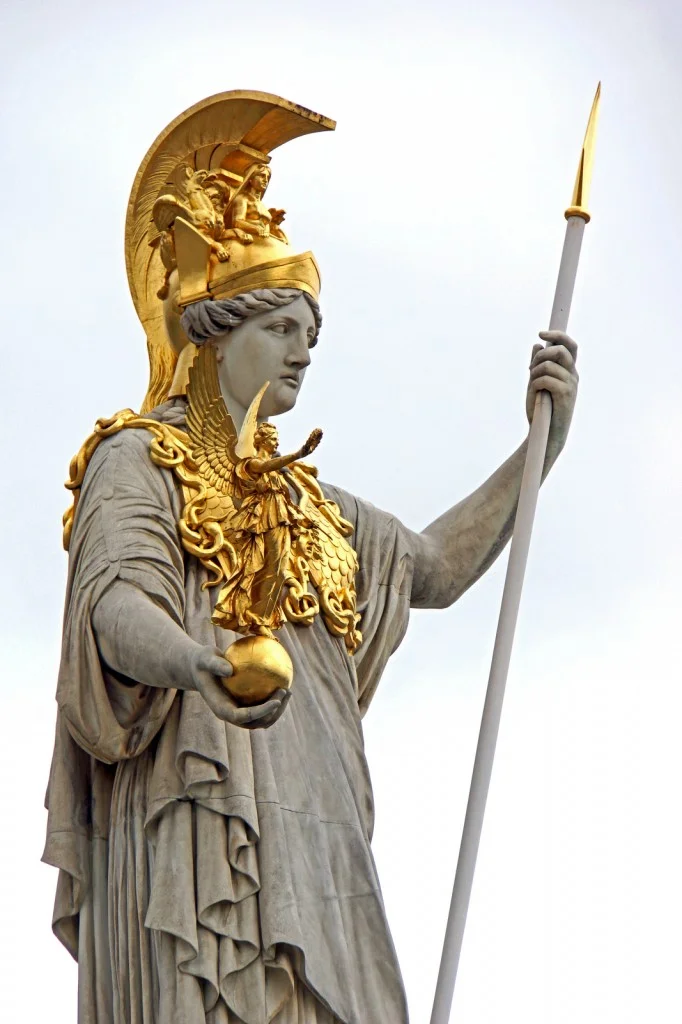A team of Greek and international divers and archaeologists have retrieved stunning new discoveries from an ancient Greek ship that sank over 2,000 years ago off the remote island of Antikythera. The rescued antiquities include tableware, ship components and a giant bronze spear that would have belonged to a life-sized warrior statue.
The Antikythera wreck was first discovered back in 1900 by sponge divers who were blown off course by a storm. They subsequently recovered an outstanding haul of ancient treasures including bronze and marble statues, jewellery, furniture, luxury glassware, and the surprisingly complex Antikythera Mechanism. However, they were forced to end their mission prematurely at the 55-meter-deep site after one diver died of the bends and two were paralysed. Ever since, archaeologists have been left wondering if the site is home to even more treasure buried beneath the seabed.
Now a team of international archaeologists including Brendan Foley from the Woods Hole Oceanographic Institution and Theotokis Theodoulou from the Hellenic Ephorate of Underwater Antiquities have returned to the treacherous site, this time accompanied with state-of-the-art technology. During the first excavation season, taking place from September 15th to October 7th 2014, the researchers have created a high-resolution, 3D map of the site using stereo cameras mounted on an autonomous underwater vehicle (AUV). Divers proceeded to recover a series of finds that prove that much of the ship’s cargo is indeed still preserved beneath the sediment.
Components of the ship, including multiple lead anchors over a metre long and a bronze rigging ring with fragments of wood still attached, prove that a large proportion of the ship survives. The discoveries were also scattered over a much larger area than the sponge divers anticipated, covering 300 metres of the seafloor. This, along with the huge size of the anchors and recovered hull planks, proves that the Antikythera ship was much larger than previously thought, possibly up to 50 metres long.
“This evidence shows that this is the largest ancient shipwreck ever discovered,” says Foley. “It’s the Titanic of the ancient world.”
The archaeologists also recovered a beautiful intact table jug, part of an ornate bed leg, and most impressive of all the finds, a two-metre-long bronze spear buried just beneath the surface of the sand. It is too large and heavy to have been used as a weapon, therefore, it must have belonged to a giant statue, perhaps a warrior or the goddess Athena, says Foley. In 1901, four giant marble horses were discovered on the wreck by sponge divers, it is thought that these possibly formed a complex of statues involving a warrior in a chariot that was pulled by four horses.

The shipwreck dates from 70 to 60 BC and is thought to have been carrying a luxury cargo of Greek treasures from the coast of Asia Minor west to Rome. Antikythera is located in the middle of this major shipping route and the ship probably sank when a violent storm smashed it against the island’s sheer cliffs.
The wreck is too deep to dive safely with regular scuba equipment, so the divers had to use rebreather technology, in which carbon dioxide is scrubbed from the exhaled air while oxygen is introduced and recirculated. This enabled them to dive on the site for up to three hours at a time.
The archaeologists plan to return next year to excavate the site further and recover more of the ship’s precious cargo. The finds, particularly the bronze spear, are “very promising,” says Theodolou. “We have a lot of work to do at this site to uncover its secrets.”
Contributing Source: Woods Hole Oceanographic Institution
Header Image Source: Wikimedia




